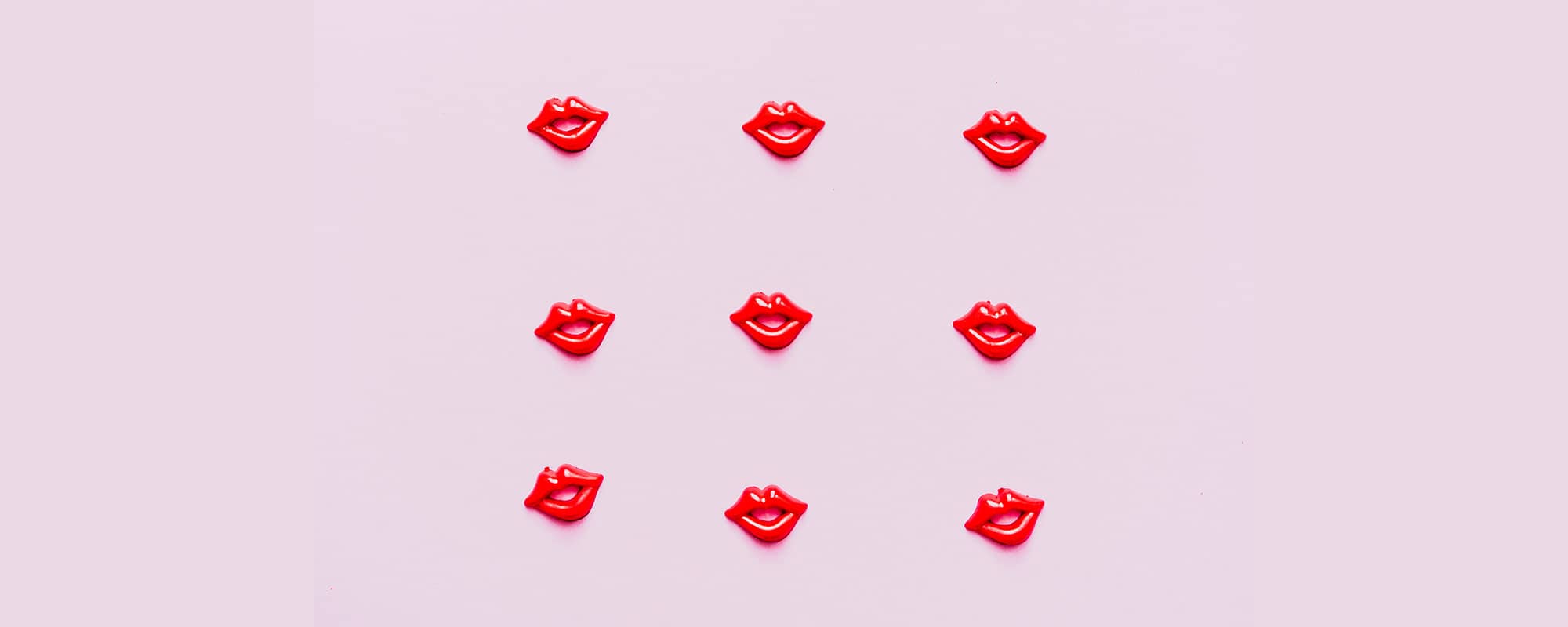Give me a thousand kisses, a hundred more, another thousand, and another hundred.
—Catullus (84–54 BCE)
The kiss: of life, of death, of one, of two, of love, hello, and au revoir. Kissing is probably prehistoric – likely older than any written text – and it could even predate the start of our species, with the oldest recorded evidence of a smooch found from the early Bronze Age. While you muster the courage to kiss a crush or lock lips with your lover this Valentine’s, let’s ask some questions: why do we do this rather unhygienic act in the first place, and when did it become a cultural signifier of love, affection, submission, and respect?
Puckering Up: An Extremely Brief History
Are we born with the desire to kiss? No. As romantic as it might be to think so, kissing is not a universal gesture among human beings. Even today, there exist some cultures, such as the Mehinaku tribe of Amazonia and sub-Saharan hunter-gatherer societies, that have no place for it. This suggests that it is not innate or intuitive as it so often seems to us.
Kissing predates recorded history. Its origins are difficult to pinpoint and likely evolved naturally as a learnt behaviour that evolved from ‘kiss feeding’ the process by which mothers feed their babies by passing masticated or pre-chewed food from mouth-to-mouth. This is what was observed in mothers of Papua New Guinea, who practised only kiss feeding until the arrival of Europeans and their romantic kiss. Still, there are some present-day indigenous cultures that practise kiss feeding but not social kissing.
One of the earliest documented references to kissing dates back to over 3,500 years ago in Ancient India, where the practice was described in the Vedas, the oldest collection of ancient Hindu scriptures. In these texts, kissing is described as inhaling each other’s soul, showing that this sign of affection has been deeply ingrained in human culture since 1500BC.
On the Western front, the Ancient Romans shaped our modern idea of kissing. In Roman society, kissing was a multifaceted, integrated practice: from romantic affection to political symbolism. Kissing on the mouth was seen as an intimate gesture between lovers, while kissing on the hand was a sign of respect and submission, reserved for formal greetings and goodbyes.
In Europe’s Middle Ages, kissing evolved to include non-sexual kisses: ‘the chaste kiss’ (the nice, non-sexual, respectful smooch) and the ‘kiss of peace’. The latter was exchanged during religious ceremonies as a symbol of forgiveness. The idea of romantic kissing being ingrained into coupledom as we know it today did not fully develop until later, during the Medieval Period and Renaissance.
‘Thus from my lips, by yours, my sin is purged’
Romeo and Juliet, Act 1, Scene 5
The modern idea of romantic kissing catapulted to prominence in Europe during the Renaissance, amid the explosion of new literature and art. Canadian historian of popular culture Marcel Danesi would ask his students why kissing is such a meaningful and emotionally powerful act. Why do we experience such an unhygienic act as beautiful and romantic?
In his book, The History of the Kiss! The Birth of Popular Culture, Danesi downplays the biological explanations of kissing, seeing how the romantic lip kiss cemented itself in the Medieval period, when it signified true love as opposed to forced or arranged relationships. The kiss therefore ‘heralded an age of romantic independence’.
Danesi’s argument is that the subversive act of kissing and its spread through stories led to the birth of popular culture itself: ‘The courtly love tradition was the first manifestation of popular writing.’ He traces the kiss through literature (such as the fateful kiss in Act V of Romeo and Juliet), images, movies (Jack and Rose’s kiss at the prow of the Titanic), and into the digital age. The history of popular culture is at its most illuminating. Countless artists like Gustav Klimt, Edvard Munch, and Auguste Rodin depicted kissing couples in their works, further cementing and popularising the notion of romantic kissing.
The Science of the Smooch
Wherever kissing really came from, just know that it’s good for you. It stimulates the release of several neurotransmitters and hormones, including oxytocin (the ‘love hormone’), dopamine (associated with pleasure), and serotonin (which regulates mood). It explains the emotional intensity and pleasure associated with kissing, particularly with someone you’re crushing or loving. A study in the 1980s also found that men who kiss their wives live longer, get in fewer car crashes, and have higher incomes. So pucker up everyone!
Further Reading
Eibl-Eibesfeldt, I. (1983). Chapter 3: A comparative approach to human ethology, in Rajecki, D. W. (ed.), Comparing Behaviour: Studying Man Studying Animals. Routledge
Danesi, M. (2013). The History of the Kiss! The Birth of Popular Culture. Palgrave Macmillan
Jankowiak, W., Garcia, J. R., & Volsche, S. (2016). The half of the world that doesn’t make out. Retrieved from https://www.sapiens.org/culture/is-romantic-kissing-a-human-universal/
Victorino, J. (2023). Unearthing the ancient origins of kissing. Advanced Science NewsLaRue, J. (2023). Osculate Me, You Fool! A Brief History of Romantic Kissing. NPR





Comments are closed for this article!